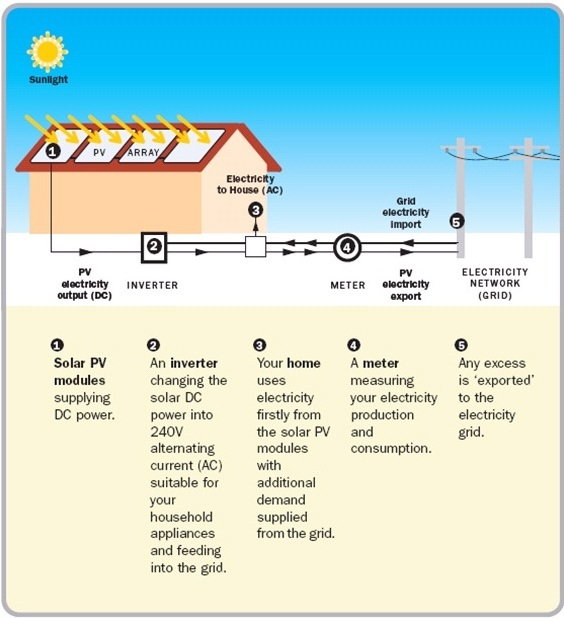Residential Solar Panel Systems

How Solar Panel Systems Work
Solar power is a zero-emission electricity source. As Australia is one of the sunniest continents in the world, solar PV can make a significant contribution to electricity generation in Australia.
Solar Panels capture the suna��s energy to generate electricity cleanly and efficiently. Light energy is converted into DC electricity by transferring photon energy into electrical energy within the cells of semiconductor crystals in the solar panels. Although the electricity is not generated at all times, it is generated at time the most needed times (during the day and on hot days when electricity is at its peak demand).
Solar Panels are generally fitted on the roof in a northerly direction (east or west is also possible with some trade offs) and at an angle to maximise the amount of sunlight that hits the Solar Panels.
Solar Hot Water Systems, where a solar panel is also mounted on household rooftops, uses the heat from the sun to provide hot water for household uses.
The majority of suburban homes in Australia are connected to the electricity grid. The grid uses AC electricity (Alternating Current). The electricity generated by a Solar PV system is generated as DC electricity (Direct Current).A� With the installation of your solar panels, an inverter is installed; this converts the DC electricity into AC electricity which is suitable for household use. A house with a solar system installed will use any created solar electricity first, and if more is required will source the electricity from the grid.A� Any electricity made by your system that is not used, will then be exported into the gridA� and credited to your power bill.

